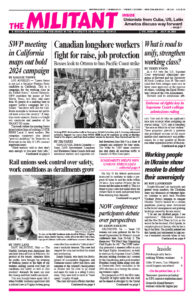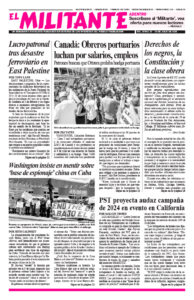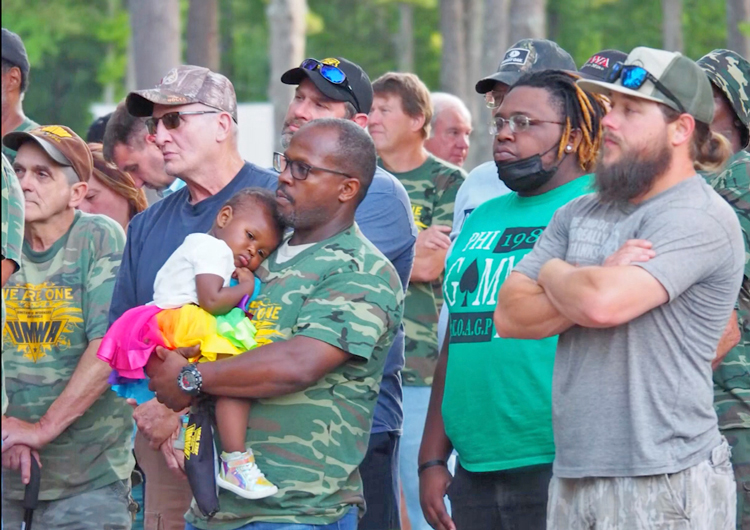In a 6-3 vote the U.S. Supreme Court overturned admissions programs at Harvard and the University of North Carolina June 29. The court ruled that both colleges used race to favor some applicants at the expense of others, violating the Equal Protection Clause of the 14th Amendment.
Harvard said its admissions officers “can and do take an applicant’s race into account when assigning an overall rating.” UNC said it considers “the race or ethnicity of any student.” These programs provide a gateway into privileged sections of the upper middle-class meritocracy and professionals for a tiny number of Blacks and other oppressed layers of the population. Their goal is to reinforce the stability of capitalist rule.
Rights that register real progress for working people extend and strengthen rights for all the oppressed and exploited. The two colleges’ policies have nothing in common with programs to combat discrimination on the basis of race won through the massive Black-led movement that uprooted Jim Crow segregation and terror. Those programs, often called affirmative action at the time, broke down many barriers to hiring, promotion and education for Blacks and women. Their success helped undercut divisions among working people and increased the unity and strength of the unions.
In 1979, for example, the Supreme Court upheld a contract fought for and won by the United Steelworkers union at Kaiser Aluminum, reserving 50% of places on a training program for Blacks and women. Some 39% of workers at the company’s Gramercy, Louisiana, plant were African American, but only five of 273 skilled jobs (1.8%) were held by Blacks and none by women.
That victory helped open the door to ongoing fights against employment discrimination on the basis of race, national origin or sex, fights that continue to this day. Efforts to tear down hiring and training hurdles have brought more workers of all skin colors and both sexes together in the workplace. During strikes and labor resistance in recent years, we’ve seen in practice how greater unity and solidarity increase the fighting potential of the labor movement.
At the same time, over the past several decades what the rulers call “affirmative action” has increasingly been used to further divide African Americans along class lines and to deepen divisions among working people.
In the Harvard and UNC cases, the Justices ruled in favor of a group calling itself Students For Fair Admissions. University programs, the Supreme Court ruling said, must have a goal that can be measured, not one with the intangible aim of “diversity.” The ruling contrasted the two college’s policies to school segregation cases where “courts can determine whether any race-based remedial action produces a distribution of students” comparable to what it would have been without a history of unconstitutional discrimination.
The court decision also pointed to workplace programs where “courts can ask whether a race-based benefit makes members of the discriminated class ‘whole for the injuries they suffered.’”
“Nothing prevents the States from according an admissions preference to identified victims of discrimination” under the Constitution, Justice Clarence Thomas wrote in a concurring opinion.
But college admissions programs “may never use race as a stereotype or negative, and — at some point — they must end,” the ruling said.
Programs arbitrary, class-based
Harvard and UNC programs had no measurable goal, the court found, and used an arbitrary selection of racial categories — American Indian, Asian, Black, Pacific Islander, Hispanic and white. This resulted in fewer Asian American admissions. When asked “how are applicants from Middle Eastern countries classified,” UNC’s defense counsel responded, “I do not know.”
“Personal ratings” scores used at Harvard included measuring candidates for “likeability” and “kindness.” African Americans were routinely placed at the top and Asian Americans last. When Students For Fair Admissions sued the colleges in 2014, Harvard instructed its officers to cease using race as a consideration in the “personality” ratings, but not the overall application.
During the trial, Harvard explained that it gives preferences to athletes and “legacy” applicants — children of financial donors, alumni and faculty. Each year these groups make up less than 5% of applicants, but account for 30% of admissions. “While race-neutral on their face,” Justice Neil Gorsuch pointed out in a concurring opinion, “these preferences undoubtedly benefit white and wealthy applicants the most.”
As part of its case, SFFA submitted evidence that Harvard could maintain a more mixed composition of its student body without using race-based admissions, if it gave applicants from the worst-off families half the preferences it gives athletes and ended special consideration for “legacy” applicants. Harvard, however, flatly rejected forgoing these class-based but endowment-ballooning criteria.
Universities have concluded that “the touchstone of an individual’s identity is … the color of their skin,” the court said. They “strip us of our individuality and undermine the very diversity of thought that universities purport to seek,” Thomas wrote. He noted that race-based admissions have gone hand-in-hand with colleges offering separate housing, induction and graduation ceremonies for Black and Caucasian students.
In a dissenting opinion, Justice Sonia Sotomayor, joined by Justices Elena Kagan and Ketanji Brown Jackson, claimed that the Supreme Court was “entrenching racial inequality.”
‘Equal protection of the laws’
The 14th Amendment was ratified in 1868 after the Second American Revolution. No state, it says, shall “deny to any person within its jurisdiction the equal protection of the laws.” Thomas pointed out this is a “wholly race-neutral text, extending privileges and immunities to all ‘citizens’ — even if its practical effect was to provide all citizens with the same privileges then enjoyed by whites.” In fact, Thomas said, the amendment “pledges that even noncitizens must be treated equally.”
Sotomayor disputed this. Rather than offering a protection, she said the amendment “enshrines a guarantee of racial equality,” which “can be enforced through race-conscious means.”
But the Constitution doesn’t “enshrine” things. Its great strength is its guarantees against state interference.
In a separate dissent, Jackson made clear her goal is advancing African Americans into the capitalist class and upper reaches of the privileged managerial and professional layers. She noted that only six Blacks are on the 2022 Fortune 500 list of CEOs.
The court’s ruling contains one exception, allowing military academies to continue using race-based admission programs. Jackson said this shows the court values racial diversity only “in the bunker, not the boardroom.” But neither of these “choices” — becoming a boss or a military officer — offers working people of any skin color a way to fight the racist discrimination that is endemic to capitalist rule, nor to defend our ability to start and sustain families as part of our class.
The owners of Apple, Procter & Gamble and Johnson & Johnson filed briefs defending Harvard for providing them with a “diverse” pool of job seekers.
Jackson’s opinion is “a call to empower privileged elites,” Thomas responded, “‘to level the playing field’ among castes and classifications that they alone can divine.” Jackson seeks to consign African Americans to “permanent victimhood,” Thomas said.
It is in the strikes and other class battles unfolding today that workers of all colors and creeds will come to fully recognize our self-worth, and unite to strengthen the working class and the unions.
Clarity on the defense of constitutional freedoms will be an invaluable aid in taking this course.


